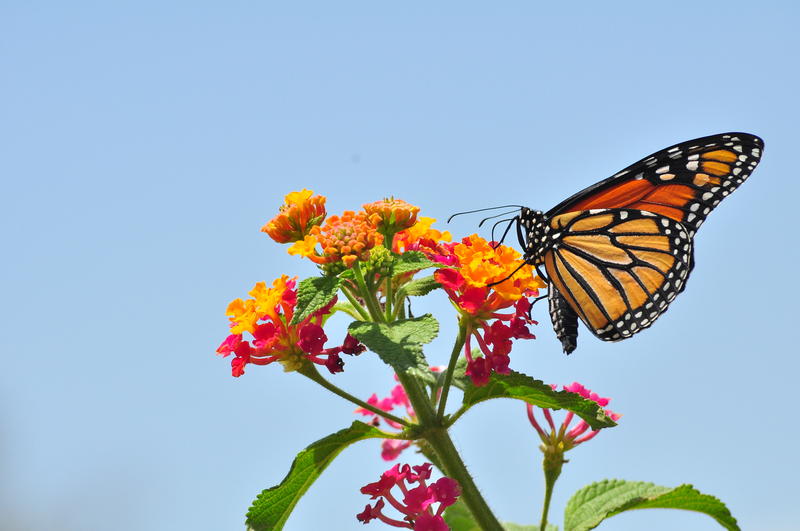
Monarch Butterflies Losing Their Food Source, Numbers Declining Sharply
The U.S. Fish and Wildlife Service is considering whether to add the monarch butterfly as a threatened species under the Endangered Species Act. The agency just launched a one-year review of the butterfly’s status.
January 8, 2015 | Source: Michigan Radio | by Rebecca Williams
Monarch butterflies are declining.
The U.S. Fish and Wildlife Service is considering whether to add the monarch butterfly as a threatened species under the Endangered Species Act. The agency just launched a one-year review of the butterfly’s status.
Tierra Curry is a senior scientist with the Center for Biological Diversity. It’s one of the groups that filed a petition to launch that review by the federal government.
She says the butterflies are found in the summer in every U.S. state except Alaska.
"But now they've declined by more than 90%," Curry says. That decline has happened in less than 20 years.
Monarchs need milkweed
Monarch butterflies are famous for migrating thousands of miles each year from Mexico to the U.S. and Canada and back. Curry explains that most monarchs from east of the Rockies converge in the mountains of central Mexico in the winter, where they form tight clusters on just a few acres of oyamel fir trees. Most monarchs west of the Rockies spend the winter in California.
Curry says in the mid-1990s, there were about a billion monarchs overwintering in Mexico. Now, she says that overwintering population is down to about 35 million. 35 million butterflies might sound like a lot, but Curry says monarchs need a very large population size to be resilient to other threats, like harsh weather.
"And the reason for that is largely the decline of milkweed in the Midwestern United States, because milkweed is the only plant that monarch caterpillars can eat," says Curry.
With the invention of Roundup Ready (glyphosate-resistant) crops, farmers were able to increase their use of the herbicide and spray it directly on their corn and soybean crops. But Curry says the herbicide kills milkweed.
"That has just caused milkweed to decline; before that, monarch butterflies successfully bred in corn and soybean fields," Curry says. "The other thing that has driven that was the increasing price of corn for the push for biofuels. So with the big push for ethanol, farmers started planting corn on conservation reserve lands and in other areas."
